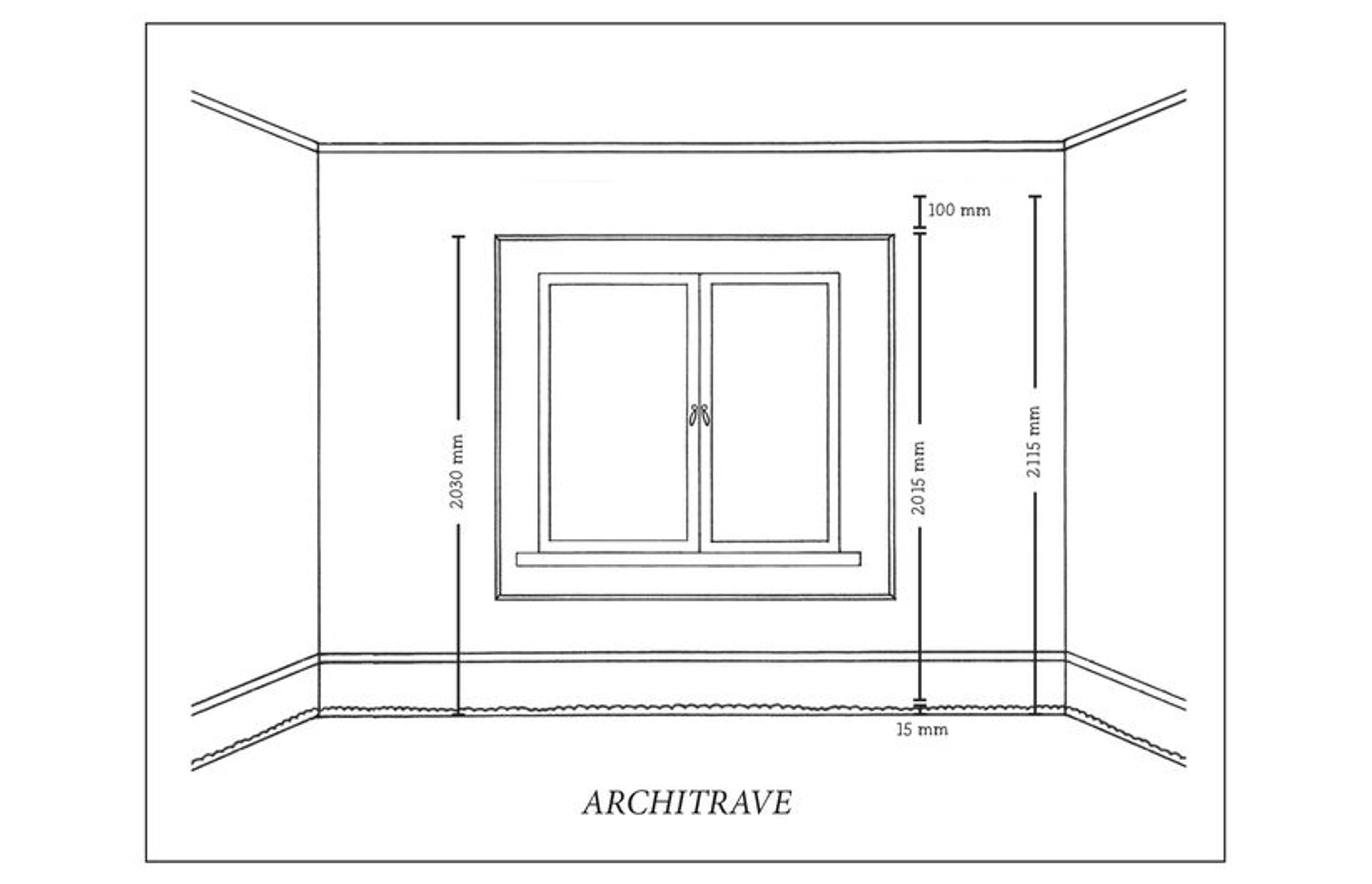How to measure curtains

Measurement Of Curtain Drop/ Length
Measure from the top of the frame to the floor and add the appropriate distance above the frame for your curtain finished length. If there is an existing track, measure from the top of the track to the floor and make relevant additions and deductions. For large windows, ranch sliders and folding doors, take at least three measurement points across the width of the window to ensure that the floor is level. Where the track is being installed above the architrave, add approximately 10mm on the length of the curtain to compensate for any slight variances when the curtain is being manufactured.
TIP: Don’t forget to consider the wall placement of substantial pieces of furniture, e.g. cabinets, book shelves etc. and how these may impede onto your window furnishing.
Manufacturers generally supply information on the heading allowances that need to be made for each of their particular types of tracking. If it is a new house and you’re measuring with no floor coverings, check what type of floor covering is going to be used. Different floor coverings have different thicknesses e.g. carpet, ceramic tiles etc., with each profile requiring different deductions.
For example:
Top of architrave to floor: 2030mm
Less carpet: 15mm
Total: 2015mm
Plus fixing above architrave: 100mm (The heading allowance is dependent on the style of track used)
Finished measurement: 2115mm
The 100mm or more allowed for fixing above the architrave gives the fitter tolerance if any measurements are slightly incorrect. The fitter is also able to gain some adjustment by shifting the pin hooks and also by slightly adjusting the track height above the architrave. Top fixing tracks require the finished length to be approximately 5 mm shorter than the floor to top of track measurement. This gives a 5 mm clearance between the track and ceiling.
Measurement Of Curtain (Below Sill)
If the customer wants the curtain to finish at the sill follow the same calculation as with a drop to the floor but finish approx. 150-300mm below the windowsill. It is important to consider the correct proportions and balance of the window when deciding exactly where to finish.

Measurement Of Curtain Width
The measurement you are taking should be in most cases the width of the window plus any stack back. This measurement will then become the track or rod length. To calculate these amounts allow 100mm of stacking per side for each 1m of track with a minimum of 200mm. This can vary, but is a good rule of thumb. If the window width is 2000mm plus 200mm stack back each side, this gives a total of 2400mm track length. This general rule will vary in the following situations:
- To make a window look larger
- Where French pleating is being used.
- Where possible, check for a stud to carry the weight of the overhang.
- Where tape, hooks and pencil pleat or similar are being used.
- Where the curtains need to be hung in a confined space
- Where there is a ranch slider or opening door requiring a single one directional draw.
Example:
If the width of the window is 2500mm plus 250mm allowance on each side for the stack-back and the studs do not fall within the 250 mm area on either side of the window, you may need to add extra length to the track to reach the nearest stud. For cord drawn tracks remember to add an extra 50 mm beyond the stud to allow for the positioning of the bracket. This is most important when using cord drawn tracking systems. Generally, this is only practical if the stud is located within 100 mm of the calculated length of the track with stack-back allowed for.
If this is not possible, the installer will have to use a toggle bolt to support the track. It is critical to give a track additional support if it is to carry a heavy curtain and is a double draw cord track. An extra bracket on the pulley end of the cord drawn track is advisable to minimise the risk of bending the bracket with the extra drag on the cord. Remember that GIB Board is a soft wall lining which will allow heavily loaded brackets to break through. It is recommended not to allow more than 200mm of track or rod past the final bracket fixing point in any installation.
Important:
To protect the fabric from ultraviolet degradation be sure to include sufficient stack-back to allow you to pull curtains off the windows when they are open.
TIP: The width required is the track width including an allowance for stack-back either side of the window. The amount of stack-back required will vary depending on the weight of the fabric as well as the curtain heading being used
Measurement Of Sheer Curtains
- Allow a minimum of 100% fullness when using tape and hooks.
- For French pleat or similar, allow a minimum of 120% fullness.
- Take the measurement inside the window frame.
- The drop measurement is also the inside frame measurement.
- The tape and hooks will lift the sheer net to clear the windowsill, or in the case of ranch sliders to clear the bottom of the ranch slider. The use of a heading above the tape will lift the curtain slightly off the sill or floor.
- This wood-to-wood width measure is the “track” measurement. Allow 10mm clearance to fit the curtain track. The track is generally top fixed, using a mini track.
TIP: Sheers can be installed on double tracks, both hand drawn and cord drawn, for a premium result.
Track manufacturers give details of allowances for each type of track.
Double tracks with sheers either as a face curtain, or as a sheer behind the main curtain, can be fitted well above the architrave near the ceiling to give the room a feeling of greater height. If using a double track adjust the finished length and heading of the curtain at the back to accommodate the height of the rear track.
Checklist:
- Are you covering light switches?
- Are air-conditioning units or burglar alarm monitors, for example, going to get in the way of the window treatments?
- Are there any fixed objects, that cannot be shifted, that may prevent the curtains from opening or closing properly?
- Check if window seats are going to be added in a bay window. If this is the case, get the depth of the squabs and make allowances.
- Check to see how the furniture will sit in each room and consider how this will affect the look of the window treatment.
- Do the tracks need to sit out from the wall to allow curtains to draw across correctly over windowsill extensions? (More relevant on older style homes)
- Is the floor level?
- Does the door open into the room causing problems with track installation? If so, ensure sufficient stack back distance is allowed so the heading tape does not interfere with the door opening.
- Is the window square with the floor and ceiling?
- If you are fitting to the ceiling, is the ceiling level? (remember large width windows should be checked across the window)
- If you are using a single draw track over a ranch slider, make sure you draw away from the ranch slider door opening.
- If you are using a “top treatment”, i.e. pelmet, or a double track, have you allowed enough clearance for the curtains to draw without obstruction?
- In new homes, check with the customer to ensure nothing will be added at a later date which could interfere with the curtains, e.g. built in dining chest.
- Make sure that the measurements that you take are with the correct architraves.
- The addition of a weighted hem to the base of sheers increases the projection or flow of the fabric, taking the fabric closer to the glass. Have you allowed enough clearance off the glass, and from the curtains compensate for this?
The measuring of curtains must be done thoroughly and accurately and is vital in ensuring a great final result.
